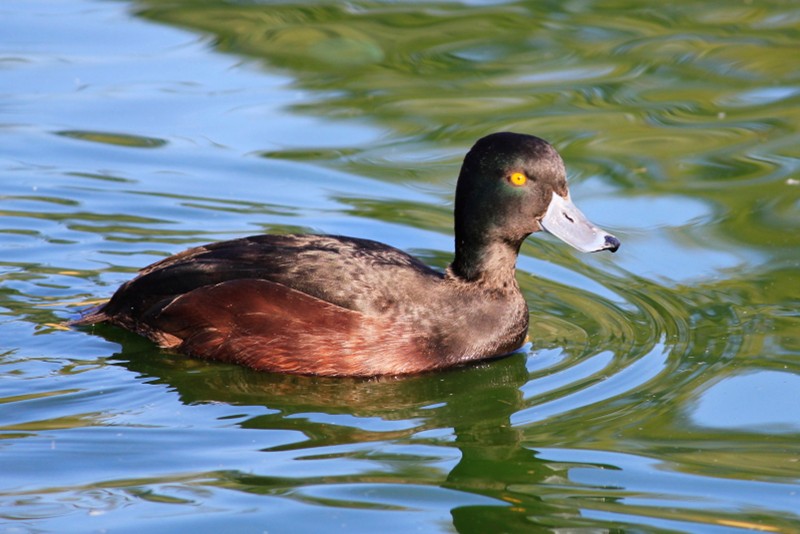
New Zealand scaup(Aythya novaeseelandiae)
Phylum —chordata
Class — aves
Order — anseriformes
Family — anatidae
Genus –aythya
Appearance
Males are dark black-brown with iridescent blue-green head and wings, lighter mottling on the chest and underparts, yellow eyes and blue-grey bill; females are duller chocolate brown with paler underparts, white feathers at the base of a grey bill, and brown eyes.
Length – 40 cm, weight: males – 695 g, females – 610 g.
Habitat
It is found throughout both the North and South Islands of New Zealand in deep freshwater lakes and ponds. Unlike other members of this genus, the scaup is not migratory, although it does move to open water from high country lakes if they become frozen in winter.
Behavior
These birds are social, and can form dense rafts especially in autumn and winter and are often associated with other species particularly coots, shovelers and crested grebes. Aggressive displays occur between courting males. Several males attend females until a bond has established, the bonded male will defend the female and they separate themselves from the group.
Diet
The scaup is a diving duck which may submerge for twenty to thirty seconds and go down three meters to look for aquatic plants, small fish, water snails, mussels and insects.
Reproduction
Pairs form at the breeding site and last only until the female begins nesting when the bond apparently breaks.Breeding mainly occurs between October and March.
The nest is well concealed on the ground close to the water. Nests may be partially open above, or covered, or have a tunnel leading to a concealed chamber. The nest is a tidy bowl consisting of the surrounding materials, and lined with a layer of down. New Zealand scaupsnest solitary or in a loose colony. Only females incubate and care for young, but solitary males, or groups of males are often reported close to breeding sites. Chicks often form crèches.
In captivity
In captivity, these birds can live up to 20 years, in nature, the lifeexpectancyis much less.
These birds need a deep pool, but the best option is a reservoir (pond).
The diet of these birds should include various kinds of leaves, water lilies, wild celery, wild rice, millet. It should also containmollusks, snails, nymphs, earthworms and leeches. Protein-rich food is important for birds during the reproduction season. During feeding, adult females eat almost only organic food.
 Russian
Russian
 English
English
























